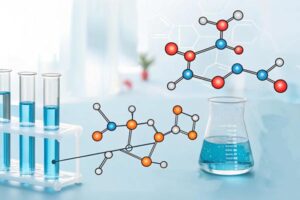
Thermal oxygen degradation of polyurethane elastomers (PUEs) and its stabilizers
Thermo-oxidative degradation is a free radical chain process initiated by atmospheric oxygen. For thermal oxygen degradation, polyester-based polyurethane elastomers (PUEs) are more stable than polyether-based polyurethane elastomers (PUEs) due to that the cohesive energy of the ester group is greater than that of the ether group. The thermal-oxidative degradation process of polyether-based PUE is initiated by the formation of hydroperoxides on the carbon atoms close to the ether bonds. The process starts at 80°C and the reaction is accelerated above 100°C.
Polyaminopropene diols are more susceptible to thermal oxidative degradation than polyethylene oxide diols due to the poor stability of hydrogen atoms on the tertiary carbon atoms and the formation of unstable hydroperoxides, which induces the auto-oxidation process.
Thermal oxidative degradation stabilizers
There are two types of thermal oxidative degradation stabilizers used as PUEs, one is a free radical chain sealer and the other is a peroxide decomposer.
Hydrolysis of polyurethane elastomers (PUEs) and hydrolysis stabilizers
It is well known that general PUEs do not tolerate water well. Elastomers have a certain degree of water absorption, and water molecules form hydrogen bonds with the polar groups of PUE, weakening the hydrogen bonds between their own molecules in the elastomer, thus reducing the physical and mechanical properties of the elastomer. This effect is reversible, and when the water is removed, its properties can be restored. However, the hydrolysis that occurs in elastomers is irreversible. Hydrolysis of PUE is the degradation of water by reaction with certain groups in PUE, such as ammonia ester groups, urea groups, ester groups, diurea groups, ether groups, etc.
Hydrolysis causes the breakage of the PUE main chain and produces carboxyl groups, which are catalysts for hydrolysis and further catalyze the hydrolysis of PUE. In addition, the hydrolytic stability of each polar group in PUE is different, in the following decreasing order: ether group > carbamate group > urea group > diglurea group > ester group.
Most of the groups in PUE are ether groups and ester groups, and the hydrolytic stability of ether groups is much greater than that of ester groups. The hydrolysis of the ester group produces carboxylic acid, which promotes the hydrolysis reaction, while the ether group does not. Therefore, the water resistance of polyether PUE is better than that of polyester PUE. In general, the improvement of water resistance of PUE is for polyester type PUE.
Hydrolytic stabilizers
To improve the hydrolytic stability of PUE, the addition of hydrolytic stabilizers is an effective way. The most commonly used hydrolytic stabilizers are carbodiimides and their derivatives and epoxy compounds.
Carbodiimide hydrolytic stabilizers are a class of compounds containing unsaturated -N==C==N- bonds. There are two types of these hydrolytic stabilizers: one is monocarbodiimide; the other is low molecular weight polycarbodiimide.
The mechanism of hydrolysis stabilization of carbodiimide is: it reacts with the carboxyl group generated by hydrolysis to produce stable acylurea, in order to inhibit the catalytic effect of the carboxyl group on hydrolysis. For the broken chain caused by hydrolysis, polycarbodiimide has a certain “repair” effect. The amount of carbodiimide is generally 0.5%~2%.
Photodegradation of polyurethane elastomers (PUEs) and its stabilizers
The photodegradation of polymers is due to the absorption of light in the environment and the degradation caused by photo-oxidation. PU polymers are particularly susceptible to photodegradation, and photodegradation can be observed even under the action of light wavelengths greater than 410 nm. Aromatic PU absorbs the entire UV band of sunlight and is more likely to absorb UV light at higher energies below 320 nm. At present, the main reaction mechanism for the photo-oxidative degradation of PU is not well understood, and the common hypothesis is that the photodegradation of PU involves the breaking of the C-N and C-O bonds in the carbamate group.
Light stabilizers
In order to prevent the photodegradation of PU, light stabilizers can usually be added, as with other polymers. The main light stabilizers used for PU are UV absorbers and hindered amine stabilizers.






